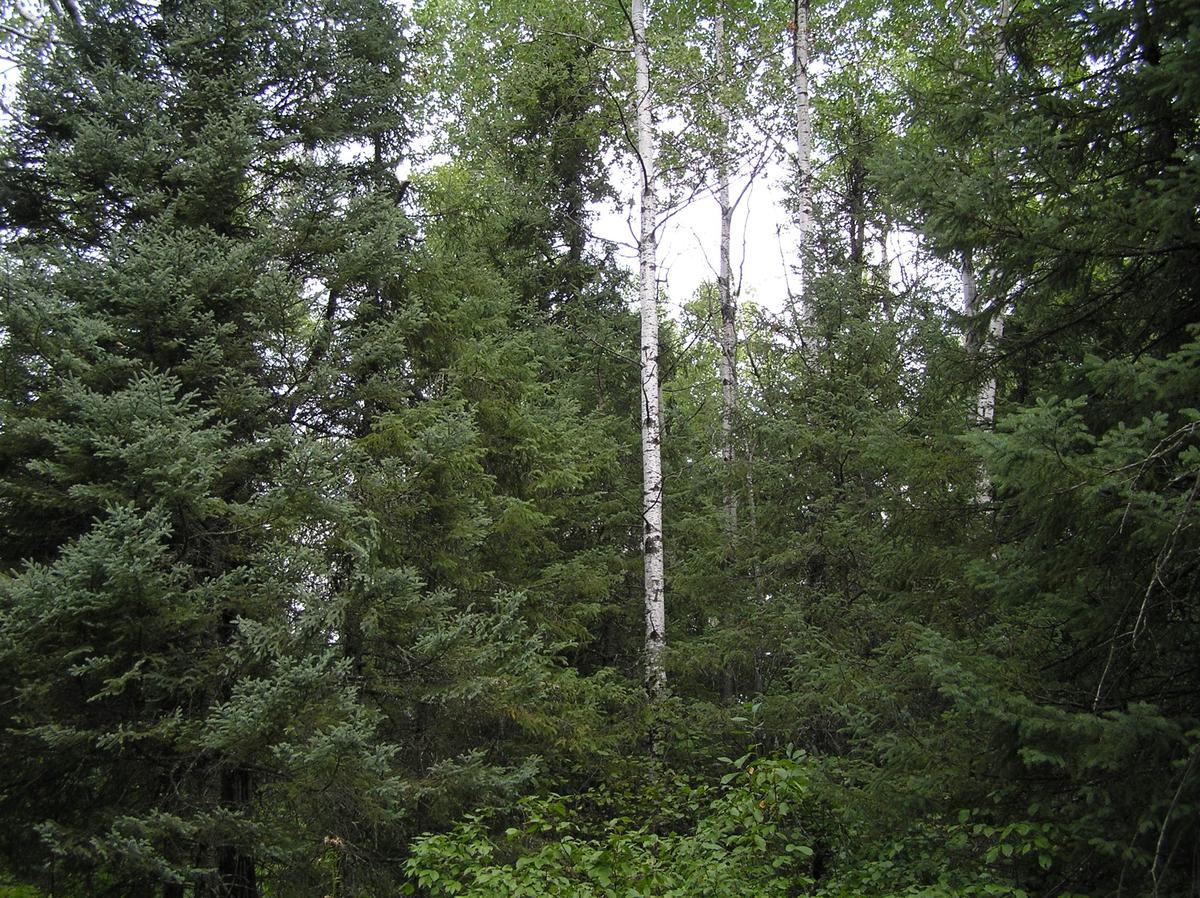Overview
This stand in 2007 was typical of mature MHn44 forests that have not been managed for a long time. There was no evidence of former logging. The oldest canopy trees were 80-90 years old and seemed to be the remnants of an initial cohort, but younger trees shared the mixed canopy of quaking aspen, paper birch, and balsam fir. Fine-scale disturbances had maintained the stand for some time, resulting in cohorts of younger, subcanopy balsam fir and sugar maple. Although much of the canopy was paper birch, none was recorded as regeneration <5” dbh. Balsam fir and red maple regeneration under 1” dbh was abundant. Mortality of canopy fir increased in this stand over the past 10 years as Armillaria pockets expanded. The stand is a formal MNDNR case-study (MHn44-CS-001) used for training.
Silviculture Objective(s)
To create a young MHn44 stand dominated by aspen and birch, but enriched in long-lived conifers such as white pine, white spruce, and white cedar. This stand should have aspen and fir ready for harvest in 30 years. At that time the stand could be perpetuated indefinitely using a group selection (large-gap) system or by thinning from above every 20-30 years. This strategy should result in a compositionally diverse, structurally complex, climatically resilient stand as a backdrop to the Almendinger home.
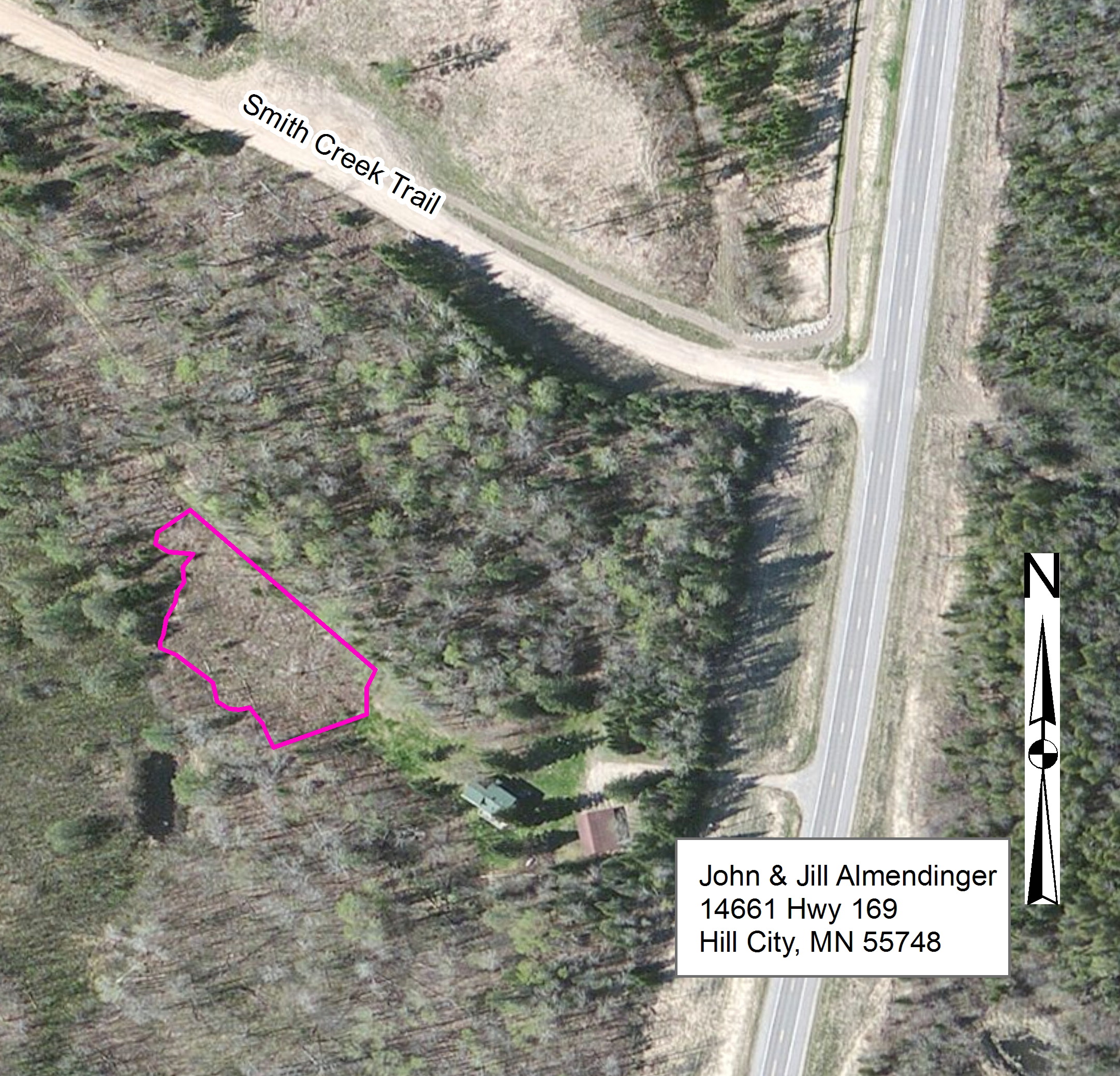
Figure 1: Map of the site
Pre-treatment stand description and condition
Stand establishment and management history:
The stand was an unmanaged patch of forest with no evidence of former logging or management.
Silviculture Prescription
Clear cut, reserving all advance regeneration of red oak, red maple, sugar maple, and balsam fir <20 feet tall. Schedule harvest during non-frozen conditions to create some mineral soil seedbed for white spruce and paper birch seed trees in adjacent stand. Plant white spruce, white pine, and white cedar at about 250 TPA in the slash with no site preparation or plan for protection. After 5 growing seasons, release planted stock, select climate-adapted volunteers, and space aspen to about 800 TPA. Target density of free-to-grow white pine and spruce was 100 TPA (approximately 40% survival). Target density of climate-adapted (warmer) trees such as sugar maple, red maple, red oak, and white pine was 100 TPA.
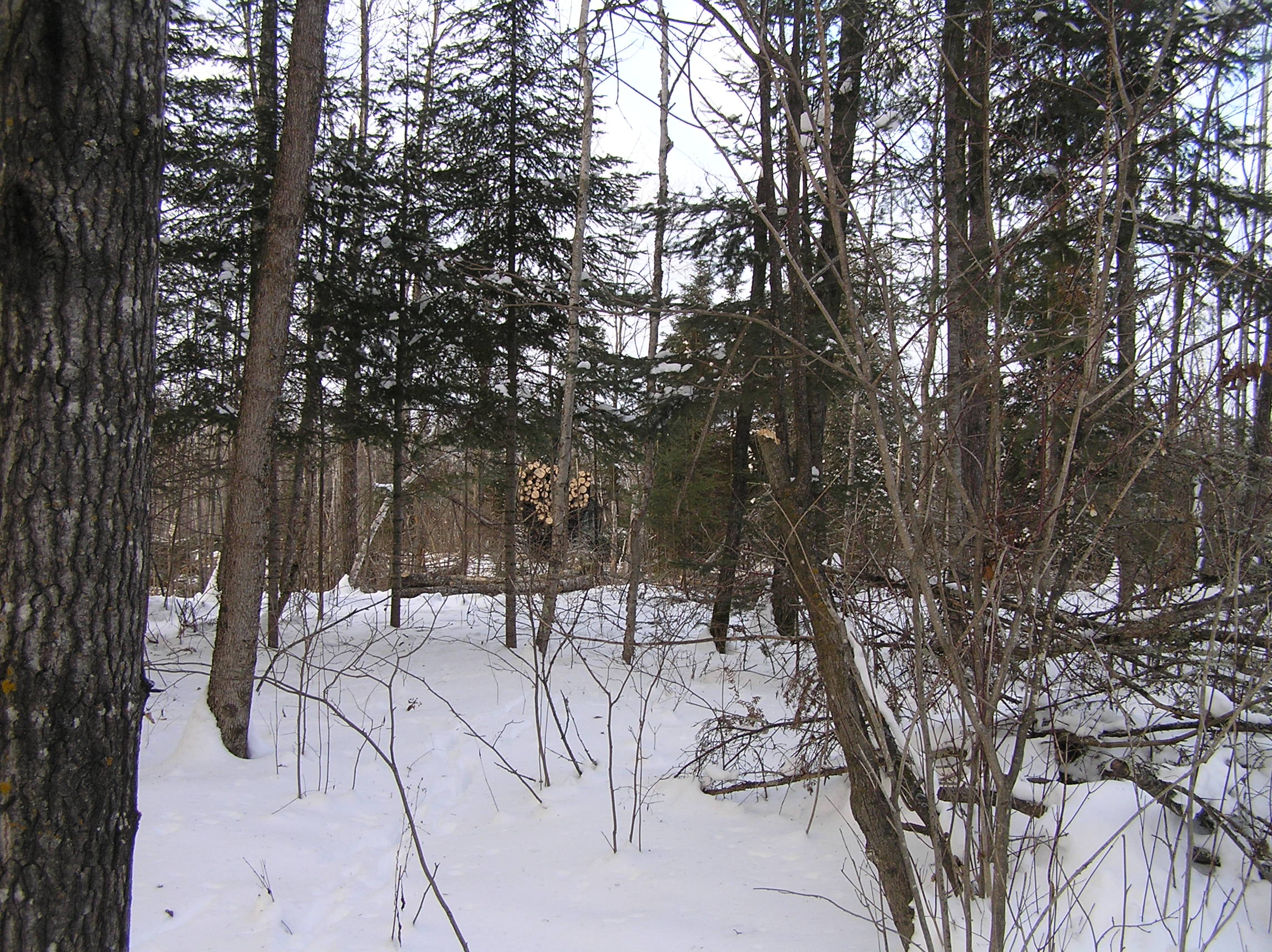
Figure 2: Stand just before harvest in 2007
What actually happened during the treatment
Summer 2007: The timber was appraised and the stumpage was sold to Blandin Paper. Also that summer, permanent plots were installed for pre-treatment measurement of regeneration (<5” dbh), basal area, and richness of all vascular plants. Winter 2008: The stand was harvested by Mike Hill of Bovey, MN with a cut-to-length processor and forwarder. The species were sorted and landed on adjacent Blandin Paper land. Early freeze up and the logger’s schedule precluded the prescribed harvest on unfrozen ground.
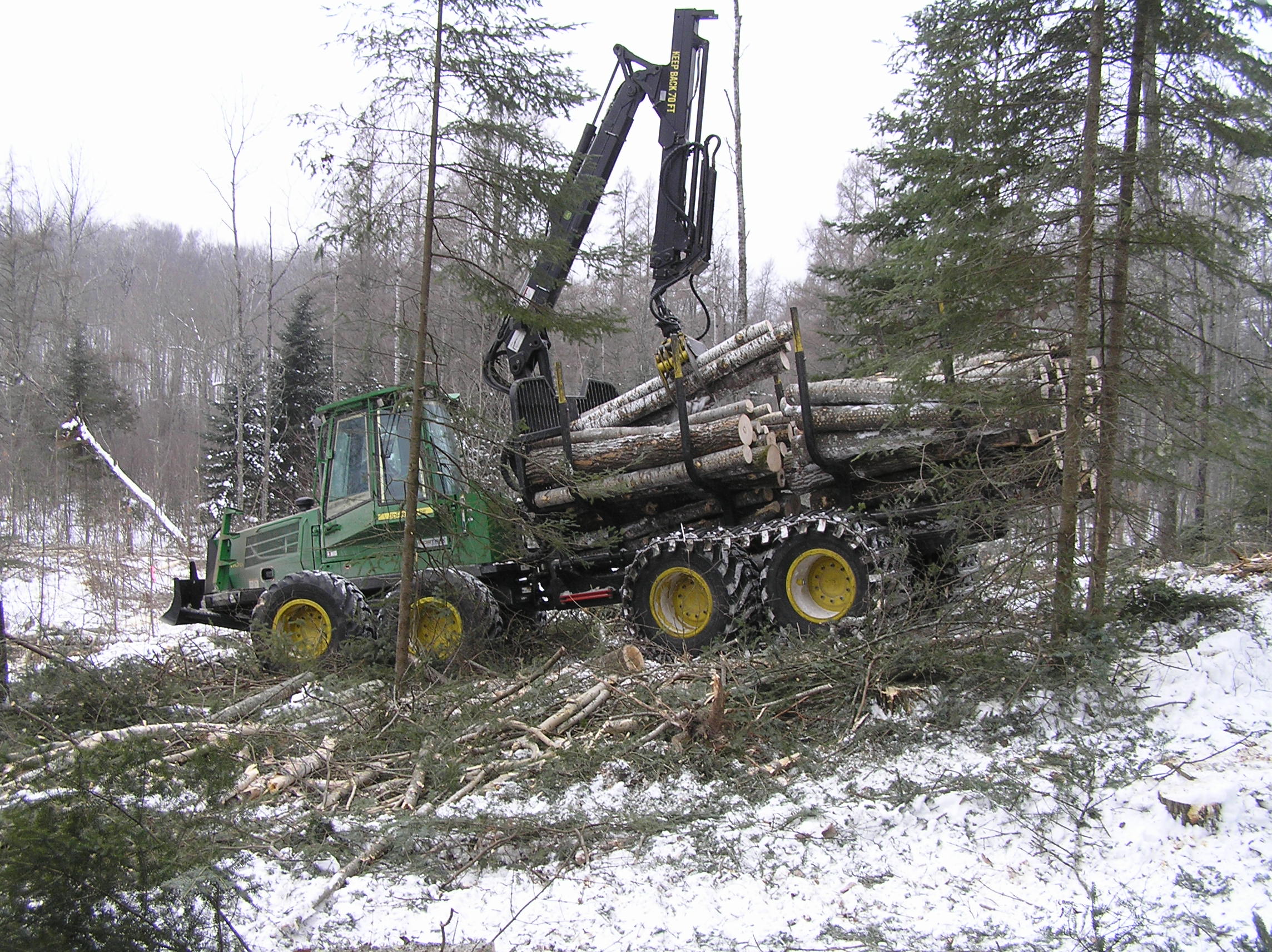
Figure 3: Stand during harvest 2007
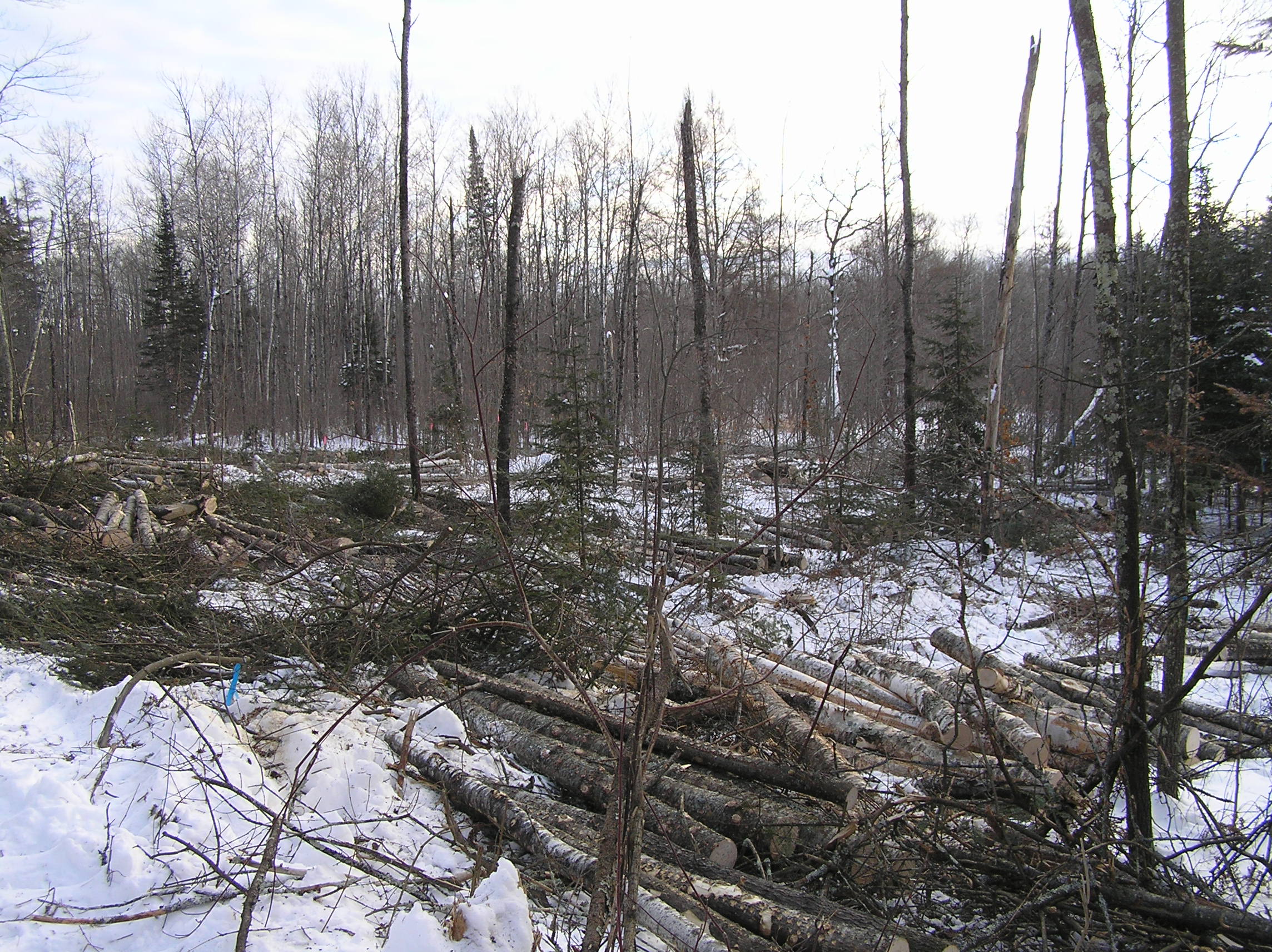
Figure 4: Stand just after harvest 2007
Spring 2008: White spruce (100), white pine (25), and white cedar (25) container stock was planted by Quintin Legler and John Almendinger.
Summer 2008: The species richness plots were re-sampled.
Summer 2012: The species richness plots were re-sampled as were the regeneration/BA plots. Unfortunately the regeneration/BA plots sheets were misplaced and are not available for this report.
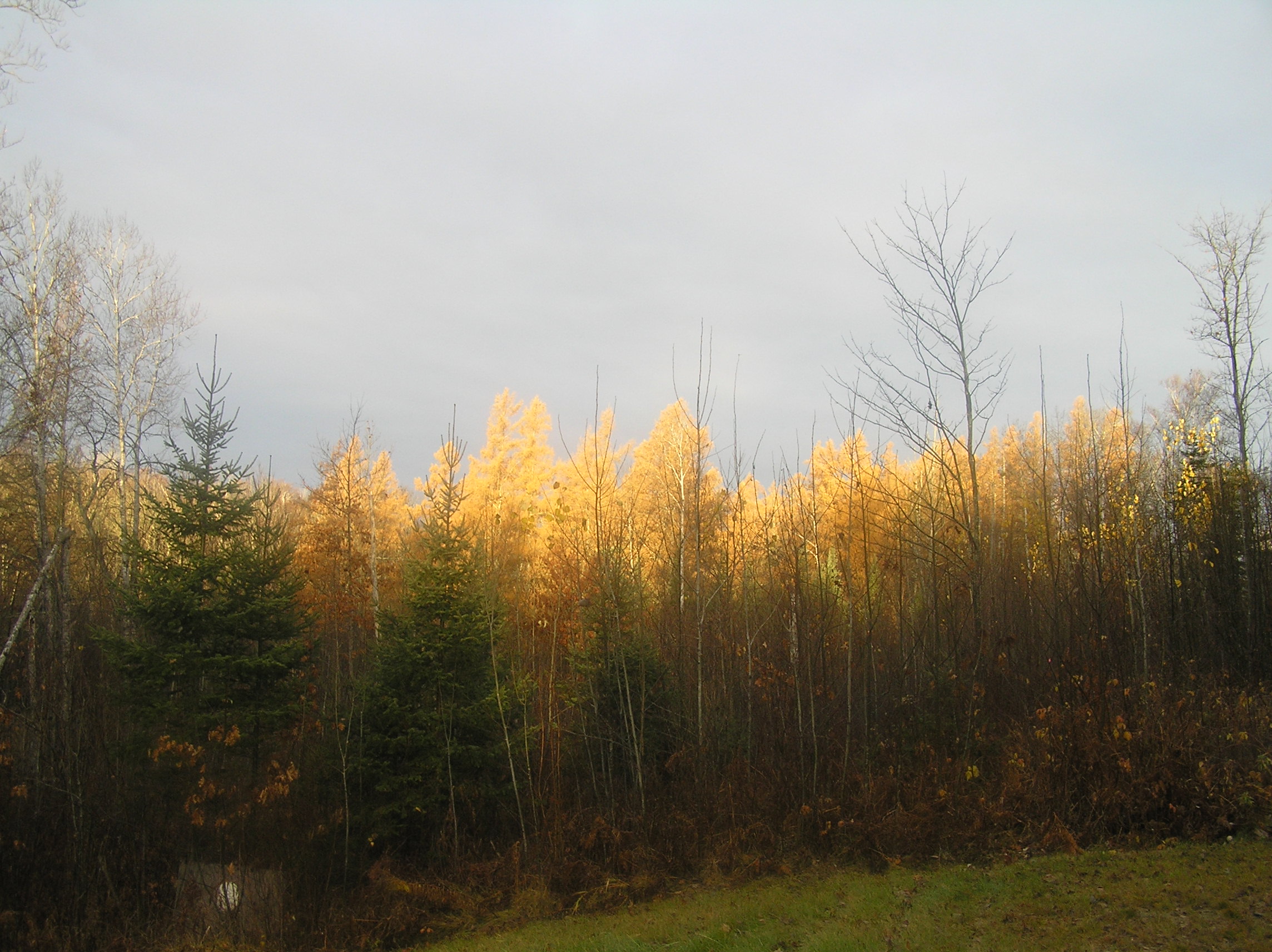
Figure 5: Stand from yard 2012
Fall 2014: The planted stock was released, climate-adapted volunteers were released, and aspen spaced using brush saws. The release reduced the density of regeneration from about 15,000 TPA to about 800 TPA. Release involved the removal of all tree stems within 4 feet of a selected tree. Leader growth on the white spruce suggested that the trees should have been released at 5 years as planned, rather than 7 years. After the brush saw work was finished, all white spruce, white pine, and white cedar were flagged and counted (total inventory).
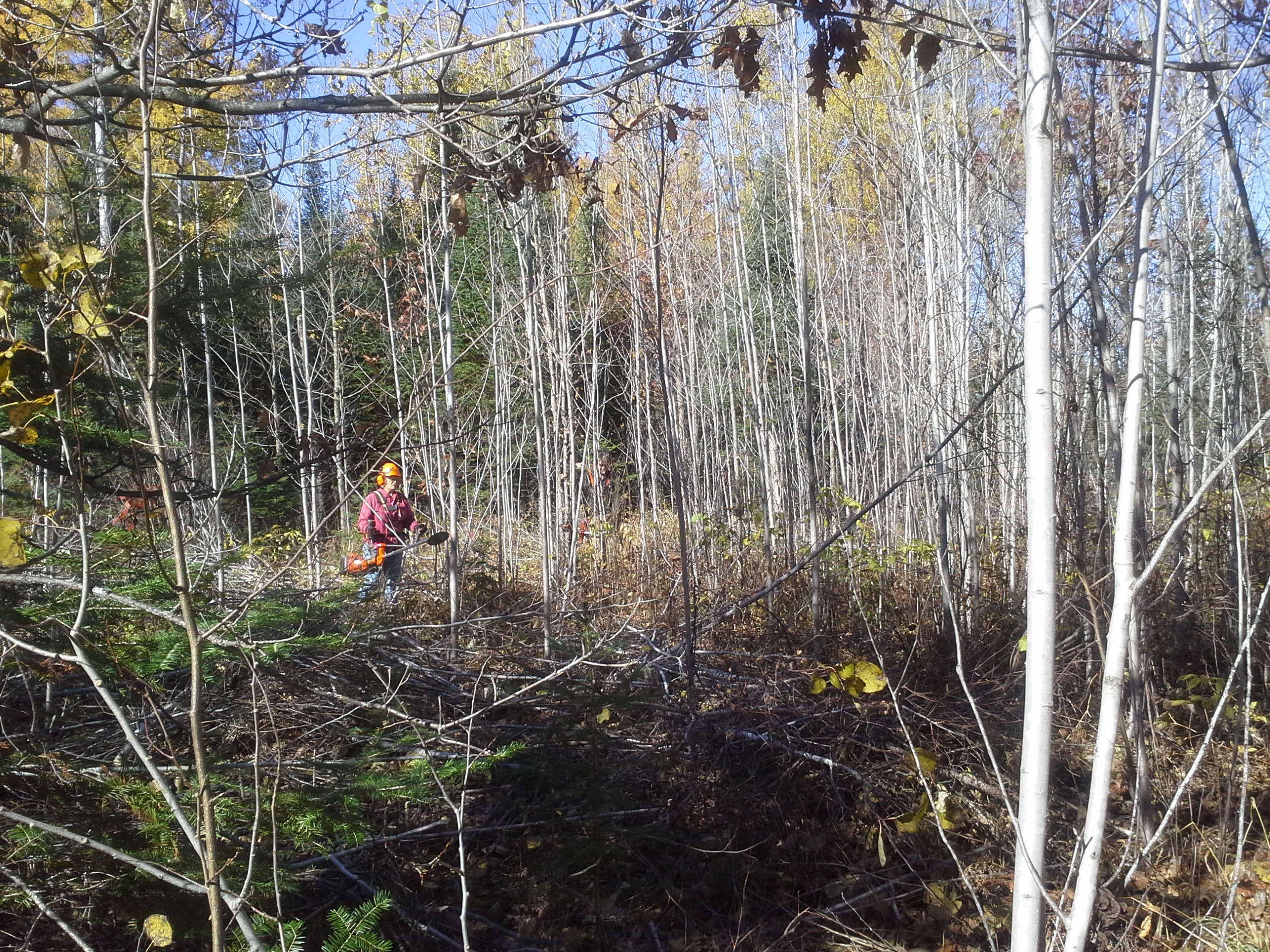
Figure 6: Brush saw release 2014
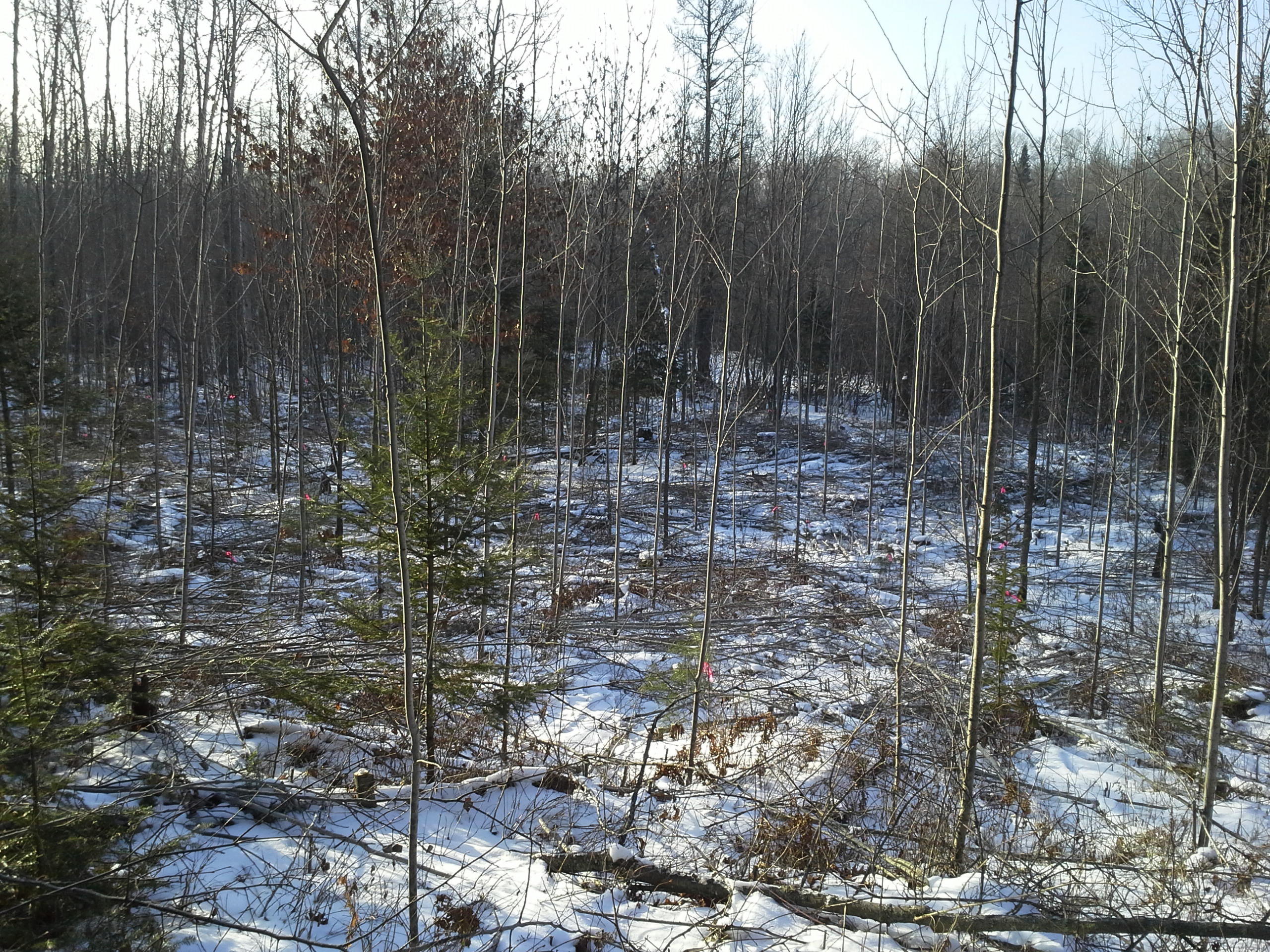
Figure 7: Stand after release 2014
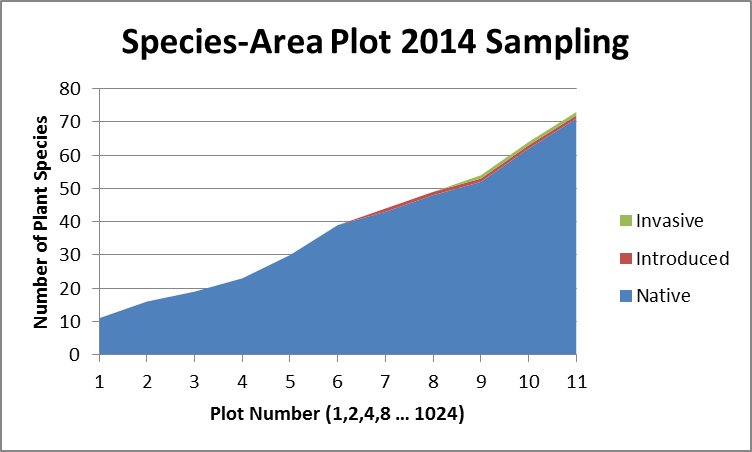
Figure 8: Species-area 2014 sampling
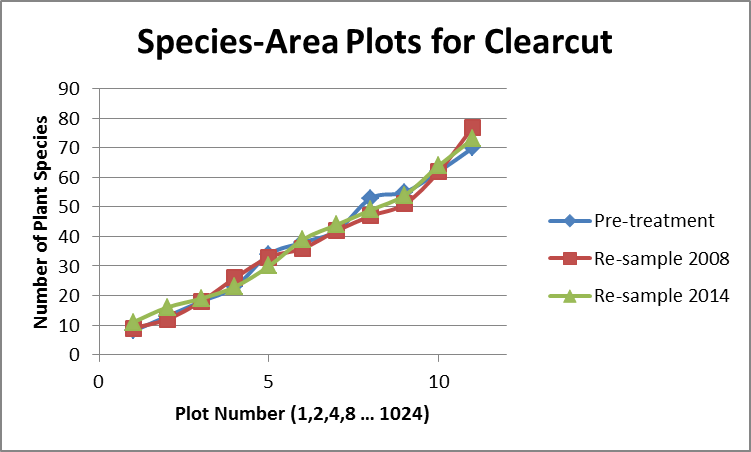
Figure 9: Species-area plots for clearcut
Post-treatment assessment
Survival of Planted Stock: Survival varied by species. White spruce survival was especially good at 98%, but high survival was expected. In similar trials Blandin Paper reports >70% survival over 7 years. Dense bracken fern and thick aspen regeneration had reduced the vigor of the planted spruce, but nearly all survived. Hopefully, they will recover quickly with this release. Also the white pine survival of 56% was acceptable, especially without bud-capping or any form of protection. Many of the white pines grew above the bracken, but they are not stout. The white cedar was attempted because the adjacent stand had some natural cedar regeneration in thickets of balsam fir along the highway right-of-way. The planting stock was healthy, but no cedars could be found in the fall of 2009 after frost. Deer and snowshoe hares did not significantly browse the white spruce and white pine. The cedar plantings seem to have been removed because no dead trees were ever located. I don’t know what did this.
|
Species |
Starting density |
Planting density |
2014 density |
Percent survival |
|
White spruce |
0 TPA |
167 TPA |
163 TPA |
98% |
|
White pine |
0 TPA |
41 TPA |
23 TPA |
56% |
|
White cedar |
0 TPA |
41 TPA |
2 TPA |
5% |
Regeneration: The 2012 regeneration plot data were lost. However the plan was to manipulate the regeneration anyway with the brush saw work. Silviculturally it didn’t matter how much regeneration there was, as long as 800-100 selected trees could be released and spaced across the stand. The planted white spruce and white pine are evenly distributed across the site because they were planted that way and because survival was good. There was impressive establishment of northern red oak across the site, estimated to be about 50 TPA. Before the harvest, there were over 12,000 balsam fir and red maple seedlings <1” dbh. Very little of that advance regeneration responded favorably to the clear cut. Most recruitment of advance regeneration of fir and maple was in size classes >1” dbh.
Effect of Treatment on Ground Layer: Species richness of the site was assessed at 11 different scales using a nested plot system (see Field Form for Species-area Curves in Supplemental Docs). The stand was sampled in 2007 prior to treatment, and in 2008 and 2014. There was very little effect of clear cutting this MHn44 stand on species richness. Based upon other case-studies, this is typical of harvesting on frozen ground followed by natural regeneration or planting without site prep. In general, species richness increased slightly from as a result of the treatment Refer to Species-area Plots, 2007, 2008, 2014 in photographs section.
The treatment also did not result in significant invasion of the site by introduced or invasive species. There were no introduced or invasive species on the plot in 2007. In 2014 a dandelion (introduced) was picked up on the 7th plot (64m2), and the invasive Canada thistle was encountered on the 9th plot (256m2). Both occurrences were single individuals, not expected to survive canopy closure. This stand is very close to large populations of introduced and invasive species along Hwy 169 and Smith Creek Trail.
There was a surprising amount of species turnover between the 2007 and 2014 samplings (refer to Species-area Comparison Report in Supplemental Docs). Thirteen plants were lost from the plot, and 22 species were gained. The difference in mean synecological coordinates between the lost group and the gained group suggests that there were significant changes in site. The plants invading the site have synecological coordinates that would suggest the stand is warmer, drier, more nutrient rich, and slightly darker. Warmer and drier are consistent with the idea that more sunlight is hitting the ground, increasing soil temperatures and thus transpiration and direct evaporation. Increased nutrient levels are consistent with the idea than slash decomposing for 7 years as added nutrients to the forest floor. That a site could be shadier after a clear cut makes little sense. However, the treatment caused dense growth of waist-high bracken fern and it is possible that the groundlayer really is shadier. Alternatively, it was very hard to find plants in the bracken and it is possible that some of the species “lost” were just missed, especially on the larger plots.
Plans for future treatments
This stand is set for free growth for the next 20 years or so. The next landowner may choose to harvest trees or not. Some release, selection, and sanitation will occur as the landowner has time. Pruning the white pine to avoid blister rust is recommended. At about age 30 commercial harvest should be possible.
Costs and economic considerations
On a per/acre basis the landowner received $578 for stumpage. The nursery stock and planting costs run about $90 for 250 trees. The brush saw release was $140. Landowner profit was $348 an acre.
Other notes
This case-study is paired with a variable-density thinning in the adjacent stand.
Summary / lessons learned / additional thoughts
This prescription met the landowners' objective of establishing at least 100 long-lived conifers around his house. Survival rates for white spruce and white pine were better than expected; a different strategy must be used for white cedar. Summer harvest scarification would have helped spruce and paper birch establishment, but might have exacerbated the introduction of exotic and invasive plants. Seeding white pine, which does well with bracken, is a potential alternative to planting.
